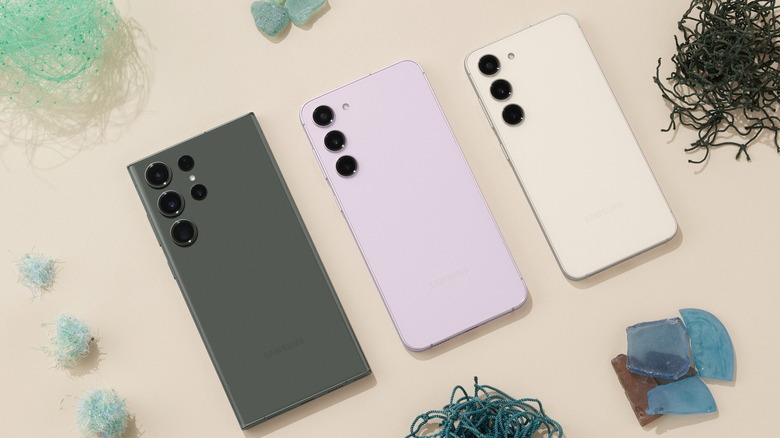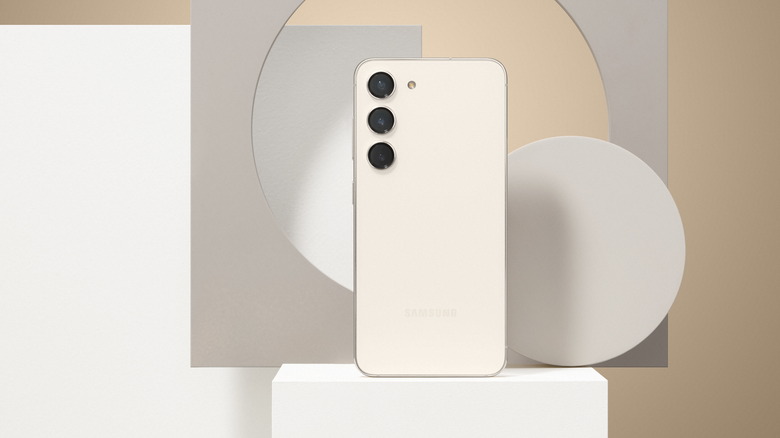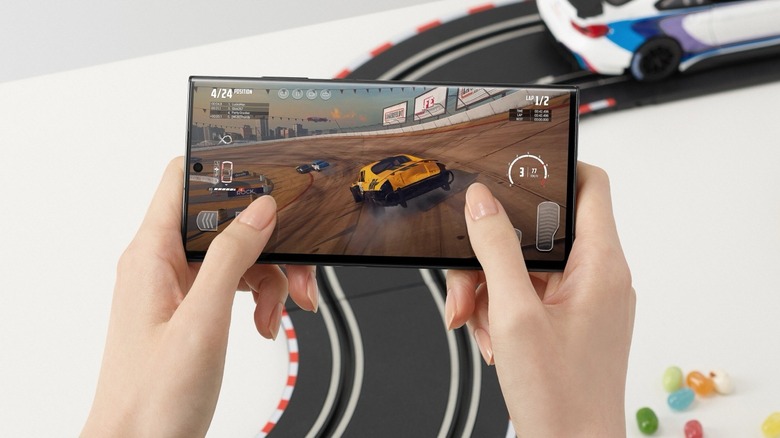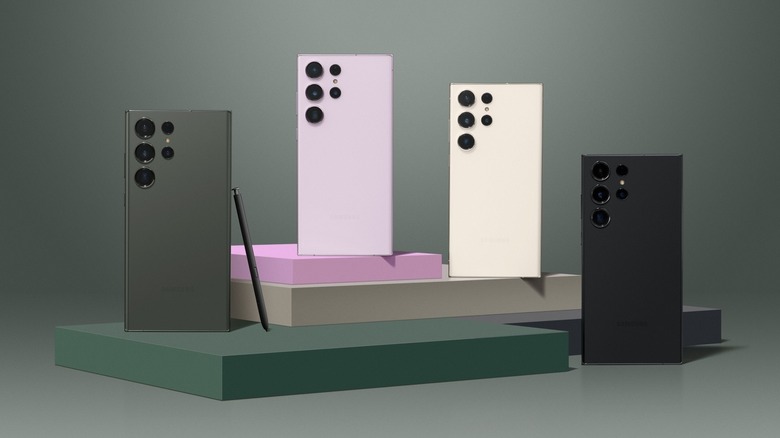Samsung Galaxy S23 Vs. Galaxy S22: Should You Upgrade?
Phone manufacturers tend to release a new phone every year, leading many people to turn in or discard their old phones in favor of a newer model. As 2023 enters its second month, it's Samsung's turn to unveil its new range of flagship phones. As with previous years, the Galaxy S23 will come in three flavors. A standard model, a larger "Plus" model, and a premium "Ultra" edition. Samsung's main rival Apple has received plenty of criticism for essentially re-releasing the same phone every year. Is Samsung doing the same thing? Is the S23 really worth the upgrade costs?
The Galaxy S23 base tier model will start at $799.99, the S23 Plus will start at $999.99, and the S23 Ultra will start at $1,199.99. Compare that with last year's prices, which ranged from $749 for the base-tier Galaxy S22, $899 for the S22 Plus, and a hefty $1,049 for the S22 Ultra. Even with a trade-in, an upgrade is still likely to cost you a few hundred dollars. The S23 line comes in four colors: Phantom Black, Green, Cream, and Lavender.
The Ultra editions of Samsung's Galaxy S range have arguably been the best Android flagship phones for several years. They offer extremely high-end specs at a premium price, but that price seemingly doesn't dissuade buyers. According to a SlashGear Survey, over 40% of respondents would opt for the Ultra when purchasing something from the S22 range. Because the S23 and S23 Plus share the majority of specs and the Ultra is a different beast entirely, we're going to look at them both separately.
How do the S23 and S23 Plus compare to the S22 range?
The first thing you notice about any phone is its size, and nothing has changed between generations here. Like the S22, the S23 has a 6.1-inch display. Both Plus models stretch that out to 6.6 inches. Both have a Dynamic AMOLED 2X display running at 120hz — just like last year. The phones even have the exact same weight within a gram as their predecessors.
The cameras are where you start to see a slight difference. The S23 has gained a few megapixels on the selfie camera, from 10 MP to 12 MP. The three main cameras on the back appear to be the same as last year. Both 4K and 8K video can be shot from the back, while the front can record 4K at 60 fps.
The S23's batteries have gained around 200 mAh this year, with the standard model now capable of holding 3,900 mAh and the Plus packing 4,700 mAh into its cell. While you get the same 8 GB of RAM and 128 GB or 256 GB storage options of last year, that extra juice may be needed for the device's new processor. The 4nm Snapdragon 8 Gen 2 processor in this year's models outperforms the Snapdragon 778G used in the S22 across most metrics (via ChipGuider). It's also protected by Gorilla Glass Victus 2, which can take a slightly bigger knock than the Victus+ used last year. The body is protected by "armor aluminum."
What about the Ultra editions?
With the S23 Ultra, Samsung says you can expect a 6.8" Dynamic AMOLED 2X Infinity-O QHD+ display with a 120 Hz refresh rate. You'll also get a 12 MP selfie camera. Samsung claims that while it has dropped a few megapixels compared to the S22, the new selfie camera is more advanced and capable of things like recording at 60 fps with Super HDR. On the back, you have a laser auto-focused 200 MP wide camera, 12 MP Ultrawide, and a pair of 10 MP tele lenses. The wide-angle camera is almost double the resolution of the 2022 edition. 100x Zoom is available again this year. Video options include 4k and 8k from the main cameras, while the selfie camera can shoot 4k at 60 fps.
Under the hood, there is a Snapdragon 8 Gen 2 Mobile Platform chip, which is an upgrade on the Qualcomm SM8450 Snapdragon 8 Gen 1 found in last year's Ultra but not as big a leap as what we're seeing in the basic S23 models. 8 GB of RAM comes as standard and is upgradeable to 12 GB.
The 8 GB model comes with 256 GB of storage. If you go for 12 GB, you can select 512 GB or 1 TB of storage space. Powering this is a 5,000 mAh battery, the same as last year. You also get an embedded Samsung S-Pen, just like last year. In terms of drop protection, the S23 Ultra has received the same upgrade to Victus 2 as the basic models.
Is it worth the upgrade?
As far as the S23 and S23 Plus are concerned, the marginal processor boost doesn't justify the upgrade cost, even if you opt for a trade-in discount. Similar to recent iPhones, little has changed between generations. Yes, the S23 range has a better chip, but you're unlikely to need the minor performance boost. The phone's configuration hasn't really changed. The performance boost is also likely offset by the higher drain the Snapdragon 8 Gen 2 places on the battery. Samsung could do several things to mitigate this and the S23 has more battery capacity, but head-to-head, there's a good chance an S22 will last a little longer.
Obviously, a spec sheet doesn't tell the whole story. Chips on the same platform can have wildly different specifications. But as things stand, the S23 Ultra really doesn't seem worth it. There's a new processor and a bit of a camera upgrade on the back, but if the information we've received is accurate then that's offset by a downgrade to the selfie camera. Not only is it not much of an upgrade from the S22 Ultra, but there's also a good chance it will be closer to the basic S23 and S23 Plus in terms of specs than the S22 Ultra was to its basic models.
Our impressions might change when we get one in for review but as things stand, people with a recent Samsung might be better off waiting for next year. Pre-orders start today, and the new phones will be in stores starting on February 17.



